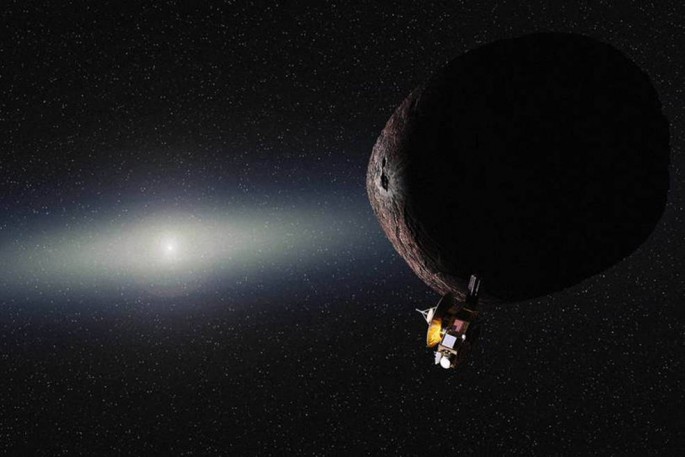As NASA's New Horizons probe is still beaming back a deluge of data from its epic flyby of Pluto from 73 million miles across the solar system, the probe is now getting ready for its next cosmic target located in a vast asteroid belt.
Currently, mission scientists are now sending maneuver commands for the spacecraft to head for an object located in the Kuiper Belt, some 1 billion miles beyond Pluto known as 2014 MU69.
New Horizons is scheduled to arrive near the object for a flyby on January 1, 2019 which is also part of an extension of the mission, waiting for approval from NASA and funding from U.S. Congress.
To date, the proposal for this extension is still in its draft stages however the maneuvers are needed to be executed at this time to be able to arrive at a successful rendezvous with 2014 MU69, says the New Horizons team.
In order to carry out these maneuvers, small thrusters fuelled by hydrazine will be fired and blasted for a period of 15 minutes to shift the trajectory of the probe by 10 meters every second. There are two maneuvers planned for October 28 and November 4 that will result in the final trajectory changes of 57 meters every second.
Apart from these crucial maneuvers, New Horizons are now beaming back data and images from one of Pluto's tiniest moons, Kerberos which reveals a much smaller size than predicted and a very reflective surface.
According to Hal Weaver from the New Horizons team and the Applied Physics Laboratory of Johns Hopkins University, the Pluto system once more surprised everyone.
Taken by the probe's Long Range Reconnaissance Imager camera, the image of Kerberos was downloaded on Earth last October 20 showing a double lobe shape where the larger one is five miles across and the smaller one measures three miles across.
Scientists are now suggesting that Kerberos is a result of a merger from two smaller cosmic objects that collided into each other. Kerberos' reflective surface also suggests that the moon may be covered with relatively clean ice water, according to the team.



























